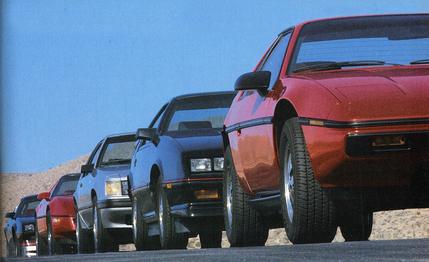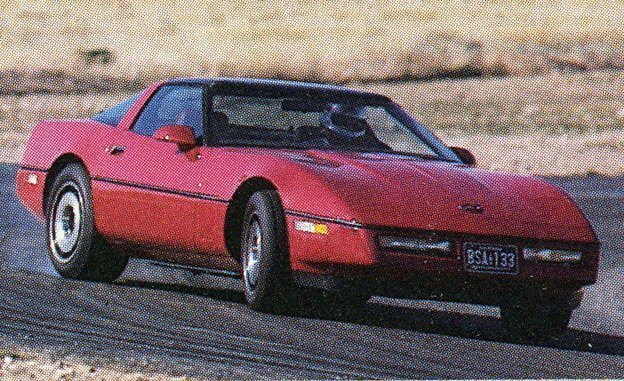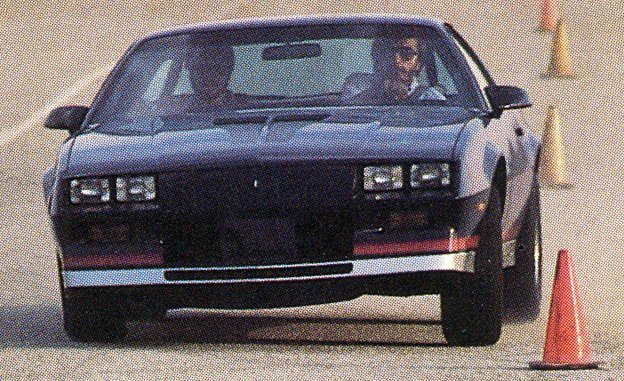 Archived Comparison
From the May 1984 issue
Archived Comparison
From the May 1984 issue
This is a test. Five automobiles—what we believe to be the cream of the American crop in terms of handling prowess—will engage in pitched battle. Twenty tires will be shredded for the greater good. Fenders will rub together on a racetrack, sphincters will pucker, felt-tipped pens will scratch heartfelt comments into logbooks. Names will be named.
A blizzard of accelerometer plots and test-execution speeds will ensue. All things considered, this is the most comprehensive investigation of automobile handling we've ever conducted, but we're not about to confuse the results with side issues. You will find no zero-to-sixty times on these pages. Top speed is irrelevant here.
Power-to-weight ratio has only a limited influence on handling, so we have bent over backward to minimize its impact on the test results. Prices have been included to feed your fantasies, but since we're not talking "handling per dollar," value is not a factor. The bottom line is, quite simply, the best-handling American-made car.
Although we're confident that our battery of ten objective tests will disclose useful evidence, no combination of track results can tell you which car is best on the road. Traffic-cone courses are crude approximations of real-world situations. Skidpad adhesion reveals something about roadholding, but roadholding is not handling.

Since we intend to find out everything that does count about handling, we will use the only known, sure-fire tools to help us make our final judgments: five automobiles, two challenging stretches of mountain highway, and six carefully calibrated pants seats.
Our best-handling equation will be a simple tally of votes culled from six well-seasoned journalists of the road. Whereas the ballot includes a whole matrix of subjective categories—everything that affects handling, from comfort to directional stability—only one column will reveal The Answer. Our best-handling bottom line will come from its own distinct vote; no mystery math applies.
Reading ahead is not allowed. We encourage you to follow our flow chart for best results. Start with the vital-statistics box, where you'll find notes on the participants. We've got new cars, old crocks, a front-driver, a mid-engined machine, and three "classic" front-engine, rear-drive designs, all of which won a berth here by virtue of their past performance.
Since we're plowing fresh ground, watch out for land mines. A vintage myth or two may blow up in your face. (Bathroom-wall proverbs insist that mid-engine handling is indomitable!) Wend your way carefully through the test-track and racetrack trials, but don't place a sucker bet on your favorite car too soon. The Answer will not be revealed prematurely.
Track testing allows a controlled exploration of a car's behavior near and beyond its limits. Our regular skidpad and slalom tests quantify two of the most important handling characteristics: smooth-pavement grip and repetitive directional-changing ability. There are many other aspects to handling, however, so we designed several new tests in the hope of quantifying more of each car's personality.
Rough-road adhesion is important because real-world pavement is rarely as smooth as a skidpad. To supplement our normal grip measurements (on a 300-foot-diameter smooth skidpad), we painted a separate circle on pavement littered with imperfections, ranging from washboard ripples to bumps large enough to launch the test cars momentarily into the air.
To no one's surprise, our Z51-equipped Corvette generated the highest smooth-skidpad figure, 0.86 g. It also easily won the bumpy test at 0.82 g. Although it pounded like a rolling jackhammer in the process, the Corvette was controllable and kept, its rubber firmly planted on the pavement.
The Z28 Camaro felt far more at ease over the bumps, with the smoothest ride of the bunch; surprisingly enough, it didn't swing its tail out much despite its solid rear axle. In the two skidpad tests, the Z28's grip fell by the same increment as the Corvette's, from 0.81 g on the smooth pad to 0.77 g on the rough one. The Pontiac Fiero achieved the same rough-pavement score, hardly worse than its 0.78-g smooth performance, but it did so with considerably more drama, hanging its tail out and pounding up through its suspension forcefully enough to rattle its plastic body panels. The Mustang SVO and the Dodge Daytona Turbo Z both circulated with more aplomb, but neither could equal the Fiero.

In contrast to the skidpad's steady cornering, a slalom test looks at transient maneuverability, rewarding controllable responsiveness more than pure grip. Here, we used a 900-foot arrangement: ten traffic cones spaced at 100-foot intervals. The Corvette and the Camaro tied for the fastest slalom speed at 60.9 mph, but their strengths and weaknesses were slightly different.
The Camaro had an ideal blend of sharp steering response, adhesion, and controllability. The Corvette could cut noticeably harder than the Camaro, but its front-rear balance was closer to neutral and it tended to hang its tail out more. Both Chevrolets could be driven in the tail-out mode, but we found that a tidy line was significantly quicker.
The three other cars tied at a considerably slower 58.2 mph through the cones. The Daytona's staunch understeer made it easy to drive, but its front tires scrubbed too much to allow really fast slalom times. The Mustang was hurt by slow steering. Its chassis responded to steering-wheel commands with an awkward two-step reaction, and the tail-out mode didn't work at all in this car. The Fiero suffered from heavy steering and a lack of power.
To quantify transient handling further, we constructed a single-lane-change test, consisting of two parallel twelve-foot-wide lanes connected by a 40-foot-long switch-over gate. The Mustang won this sashay through the cones with an astonishingly high speed of 56.4 mph, though it was far and away the most difficult car to control. Careful steering inputs and a gentle throttle foot were required to keep the SVO from kicking its tail out and spinning off toward oblivion.
The Z28 had far more controllable tail swings but couldn't quite match the Mustang's speed. The Corvette's tail wags were just as controllable, but they also limited its speed. The Daytona was again the easiest to drive (as it was in the slalom), and, as before, the price was excessive understeer. The Fiero was last, hurt by transient oversteer beyond the control of its slow, heavy steering.